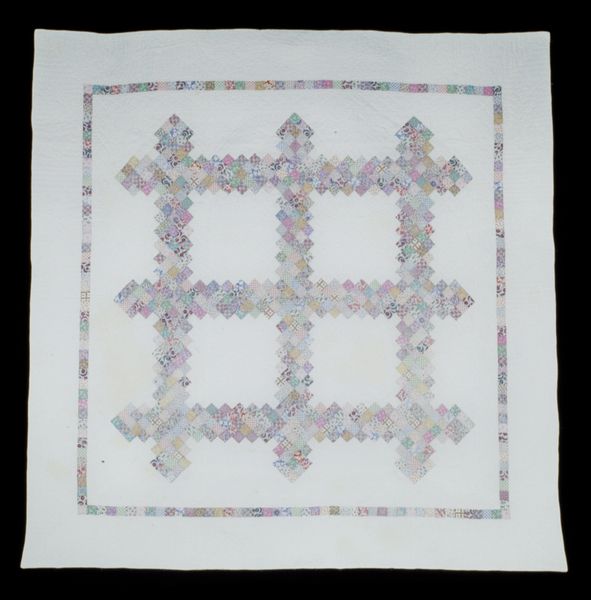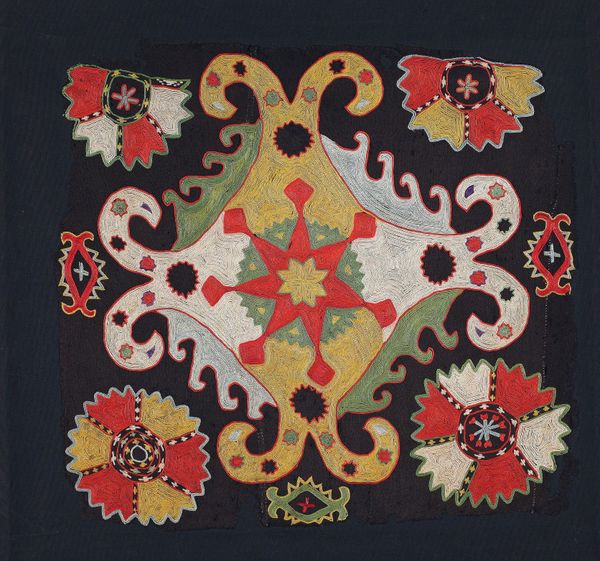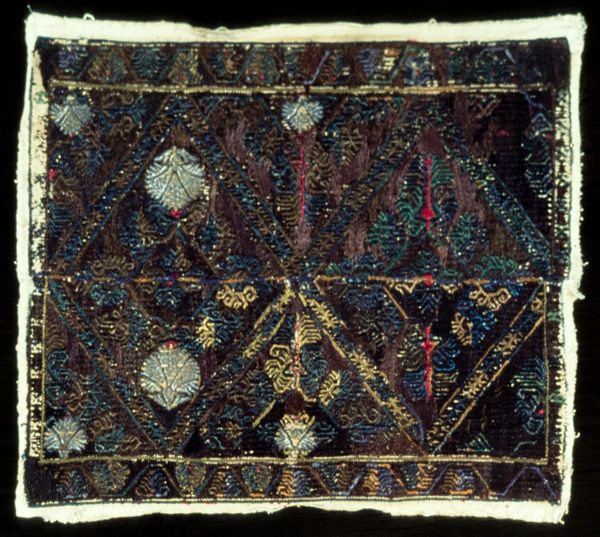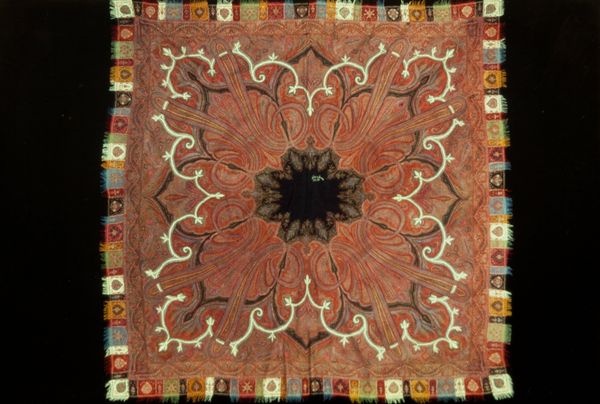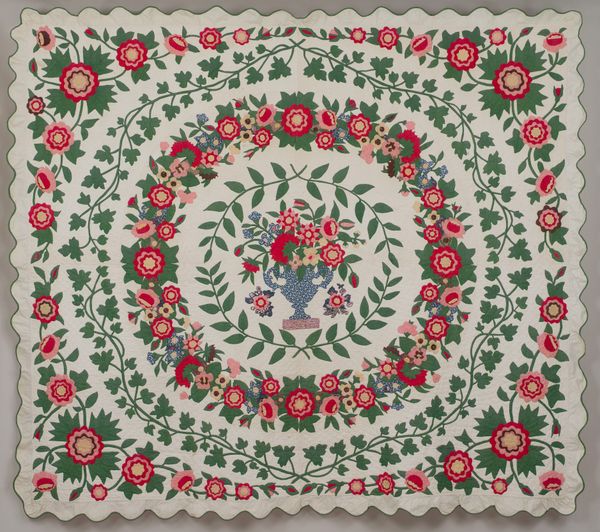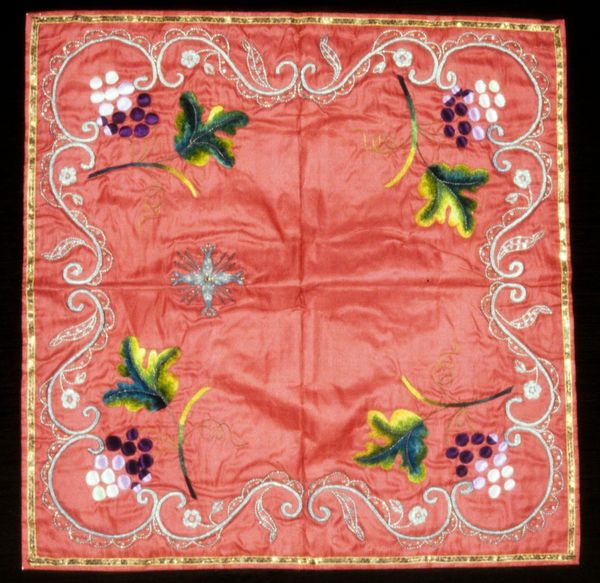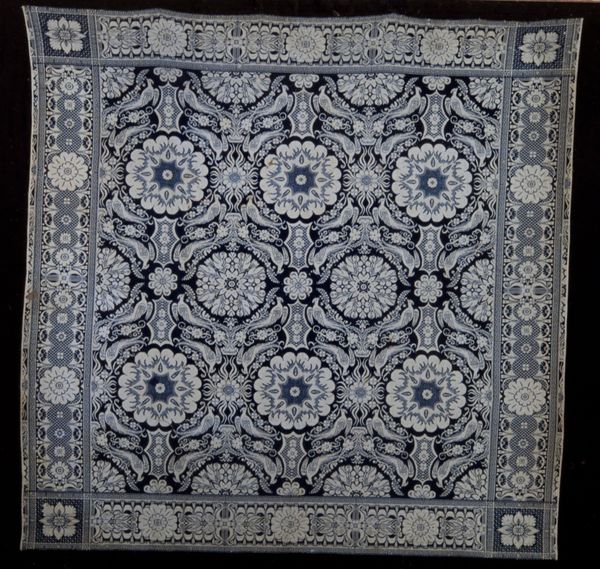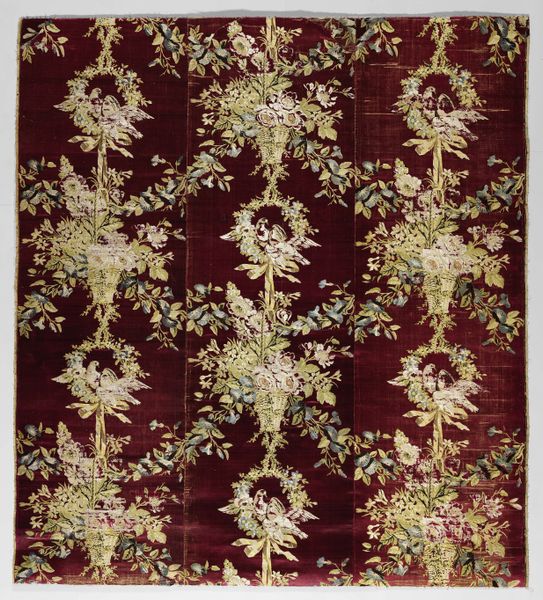
painting, textile, acrylic-paint
#
abstract painting
#
painting
#
pattern
#
landscape
#
textile
#
acrylic-paint
#
text
#
geometric pattern
#
abstraction
#
line
#
pattern repetition
Copyright: Horia Bernea,Fair Use
Curator: Horia Bernea's "Prapor IV" from 1976 is quite intriguing, isn’t it? The acrylic paint on textile gives it an almost weathered quality. Editor: My first thought is that it feels deceptively cheerful. All those scattered floral motifs on that almost-pastel blue ground have an undeniable optimism despite that imposing central axis. Curator: That central axis is key. Looking at the materiality – acrylic on, what is essentially, fabric – disrupts typical notions of painting. It’s closer to folk art perhaps, or even design, and by doing so questions high/low art distinctions. Think about where Bernea sourced this textile and the labor involved to create it and the implications behind what and how the artist chooses to put this pattern to work, what meaning the artist created or deconstructed in 1976, against which cultural backdrop, by the work of their hand. Editor: Exactly. I find that geometric rigor within that field of wildflowers to be really fascinating. Given the era, it subtly vibrates with dissent. In 1976 Romania was firmly under Ceaușescu’s thumb, with limited individual freedom of expression, that means the flower motif as a form of visual language and coded communication feels like a politically charged commentary of national identity during a state-controlled environment, or it attempts to challenge and reimagine the nation's official visual culture. It also brings into sharp relief the question of imposed structures, doesn’t it? That very ordered cruciform trying to contain a burst of nature feels poignant to the period. Curator: Precisely, and considering the repetition, it has all the visual hallmarks of pattern making which invites considerations around production. But what I find amazing here is that by using a traditionally undervalued medium of fabric the piece manages to critique the modes of artistic output itself under totalitarian states where there was limited artistic innovation or freedom to the choice of means for making art. Editor: Yes, this challenges the historical moment. By subtly subverting expected forms of political rhetoric within state narratives the artwork could question collective identity, resist ideological imposition, and reflect marginalized voices or hidden stories. In a time that repressed any alternative discourse it is incredible to reflect on the material act of painting as activism. Curator: Well said. It offers an important reminder of the complex and often covert ways artists challenge structures of power. Editor: A powerful, and unexpectedly intricate work, indeed.
Comments
No comments
Be the first to comment and join the conversation on the ultimate creative platform.

